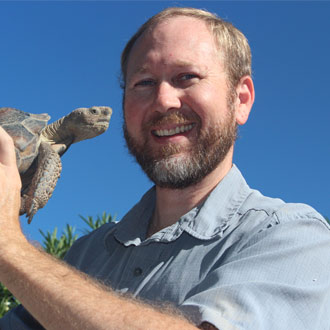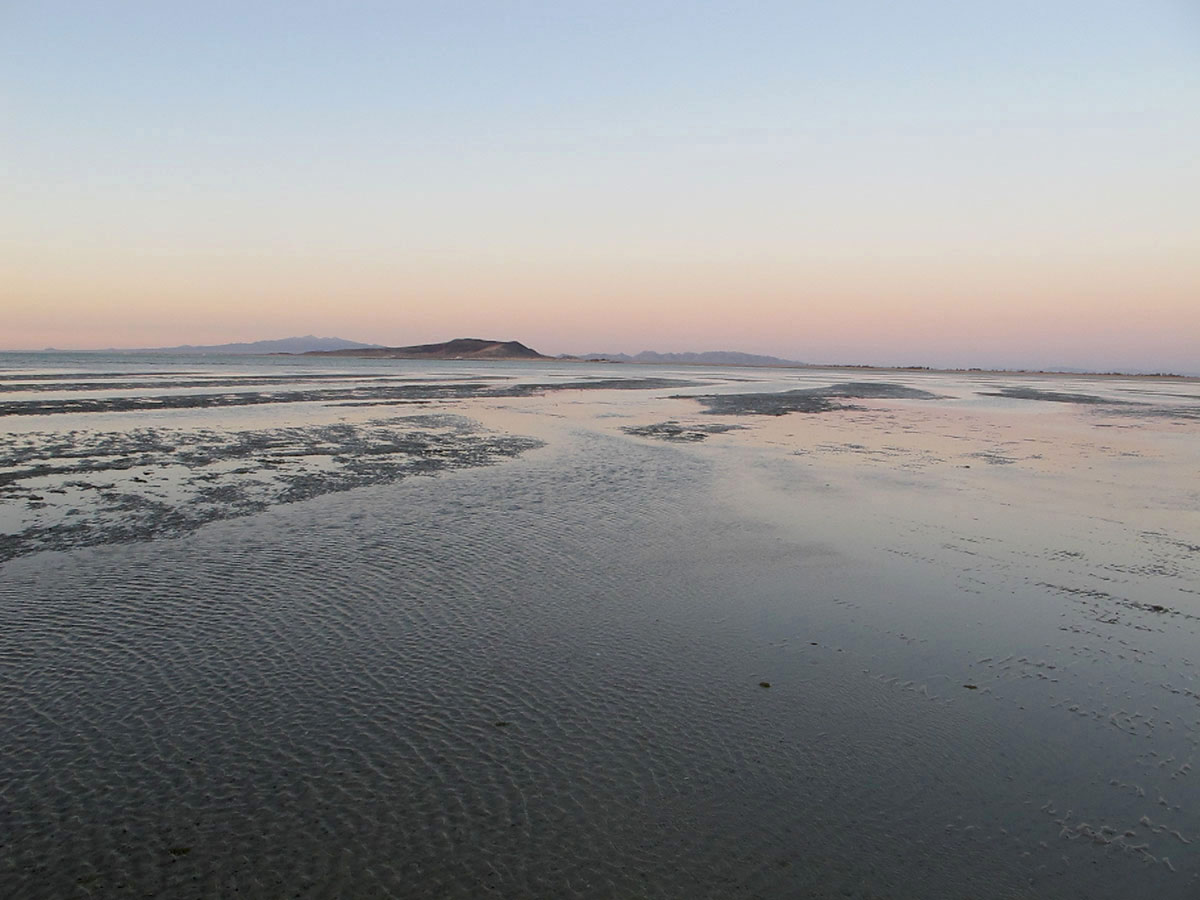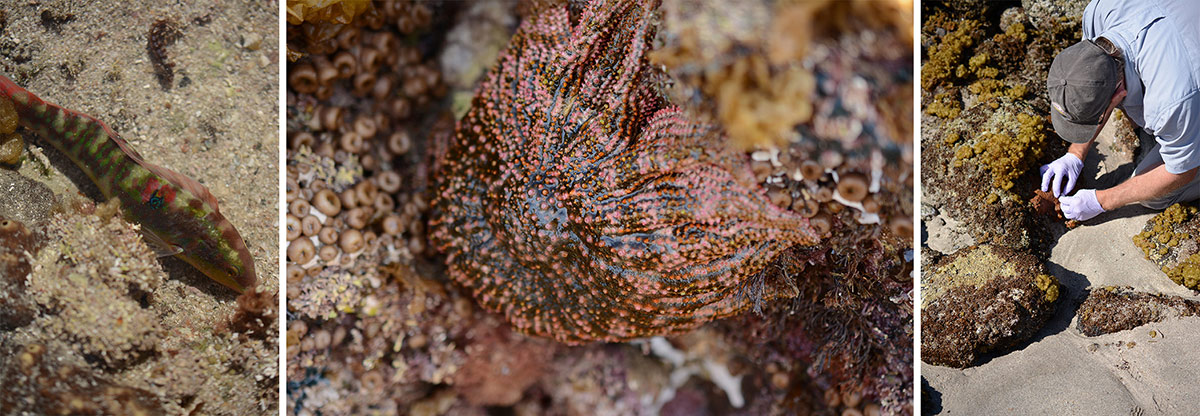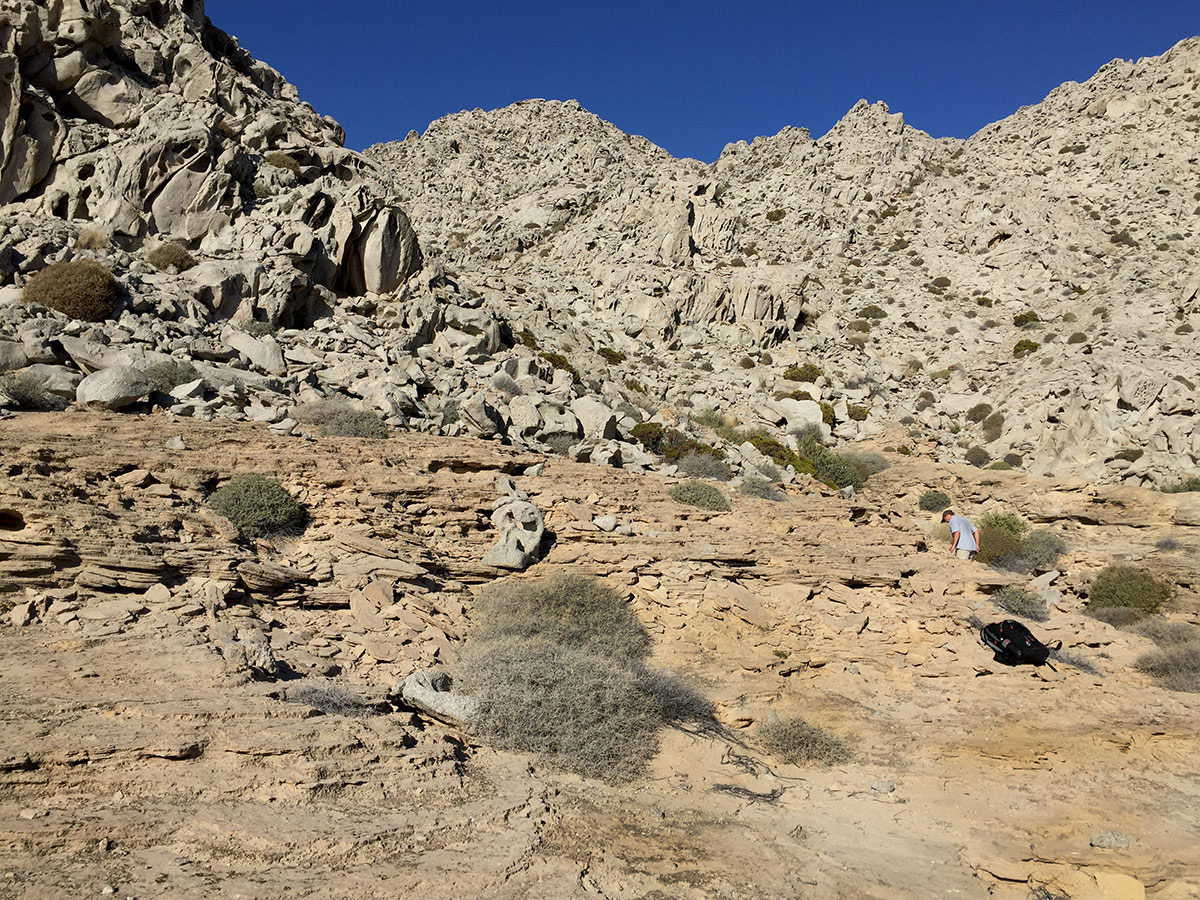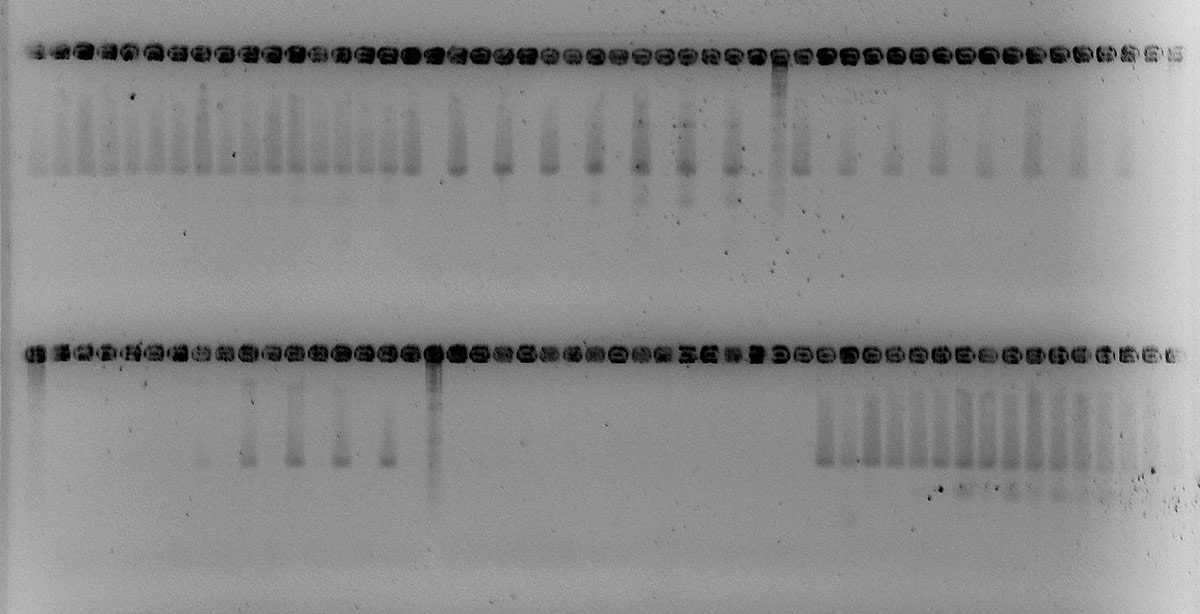In March we traveled to La Cholla to explore its diverse biomes—the bay, estuary, rocky intertidal and bluff—to try to hone our project hypothesis. It was beautiful, with still so many plants in bloom, a new moon and a large tidal shift.
The first evening we explored the expanse of the bay by headlamps—walking ankle- deep among buried flounder, bullseye puffers that seemed to be just dreamily floating, sea hares, swimming two-spotted octopus, a giant blooming metridium anemone and undulating sting rays. It grew foggy, and through the beam of our headlamps we could make out numerous great blue herons wading in the distance, with a multitude of stars visible overhead.
The next morning we ventured out in the rocky intertidal between Pinto and Pelican Point, encountering dozens of heliasters, a swimming clam, buried mantis shrimp, a colorful wounded wrasse, and so many other creatures. The rich textures of all of the life on the underside of rocks were also of interest—bryazoans, tunicates, sponges, limpets and chitons—Taylor wondered how their individual gut flora might differ from the surrounding ocean water, and what eDNA might reveal about the possible symbiotic relationships that might otherwise go unnoticed. He collected internal liquid from anemones, sponges and sea cucumbers to test from.
Then we hiked the circumference of the rocky and isolated bluff, Roca del Toro—an island now surrounded by encroaching development, although perhaps it has always been a sequestered setting for the creatures that live there. Over two days we spotted two chuckwallas and collected scat from outside their dens. We were able to see them tucked deep inside with the reflective light of Taylor’s field mirror. We hope to gather enough DNA from the surface of the scat to identify the lizards and their relationship to the surrounding landscape. Have these chuckwallas diverged geneticaly due to of the secluded area they live, or are they the same common Sonoran Desert species, only recently becoming isolated due to the intruding development?
Back in the lab in Arizona, we successfully isolated DNA from both the sea water and the scat samples. We are trying to characterize the genetic lineage of the chuckwalla population at Roca del Toro and have successfully isolated a small ‘sentence’ of mitochondrial DNA that will act as a barcode to identify how this small, isolated population fits into the genealogy of Chuckwallas in the rest of their range.


